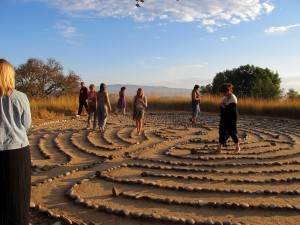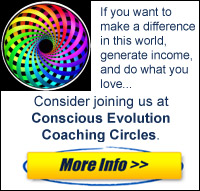Tools for Transformation – Drumming
2014
Two Perspectives on Drumming as a Tool for Transformation
Dr. Amit Nagpal, New Delhi, India, and
Dr. Janet Smith Warfield, Florida, USA
Dr. Amit Nagpal’s Perspective
Fifteen years back, I made an attempt at learning drumming. With a cluttered mind, I could not. I took the help of a coach. And all I remember about his coaching was that he had a slew of drumming magazines. My shock was, that while India did not have a single magazine on music in those days, the USA had four magazines on drumming itself.
I learned one or two simple beats and could not progress further. I have had few failures in life but drumming has been one of them. Passion did not help, coaching did not help, practice did not help. The pressures of life had sucked too much out of me or my mind rather.
Then I came to know of the power of Baroque and Jazz. In a book on Mind Power Techniques, Raj Bapna says that since the rhythm/beats in Jazz/Baroque is random, the mind cannot predict anything. Since it cannot predict, the mind which loves to make a fool of itself by staying in the past or future, fails to fool itself. The mind is almost forced to live in the moment. So you find peace.
And I found peace in Baroque. Oh my God, it was so tough to find a baroque music cassette in those days. After all, being digital immigrants, we were not lucky to have Youtube.
Then after years of meditation, I found deep peace and clarity. But by then, learning drumming had gone down on the priority list. (Does drumming heal? I am not sure. I have not experienced it.)
I found Baroque, I found peace. I found meditation, I found deep peace. When you are at peace with yourself, you are at peace with the world.
May peace be with you too! Amen.
____________________________________________________________________________________________________
Dr Amit Nagpal is Chief Inspirational Storyteller at AL Services. He is an Author, Speaker/Trainer and Coach. He is also a Social Media Influencer and blogs on Linkedin as LinkedIn Influencer-Marketing. His special interest and expertise lies in inspirational storytelling, anecdotes and visual storytelling for brand building. To know more, visit www.dramitnagpal.com.
AL Services offers content development/story writing, consulting, training and other services in the area of brand storytelling. To know more, write to amit@dramitnagpal.com.
____________________________________________________________________________________________________
Dr. Janet Smith Warfield’s Perspective
 Drumming is a practice that uses sound, rhythm, and vibration to heal. By fully immersing oneself in the experience, the drummer can enter into an altered state of consciousness that is sometimes verbalized as “journeying between the physical and spiritual worlds.”
Drumming is a practice that uses sound, rhythm, and vibration to heal. By fully immersing oneself in the experience, the drummer can enter into an altered state of consciousness that is sometimes verbalized as “journeying between the physical and spiritual worlds.”
Cultures all over the world have practiced drumming for thousands of years. The experience is an end in itself, not preparation for a performance.
When the drumming becomes synchronized, it is very powerful. Drummers often take turns setting the rhythm and beat.
The circle itself is the perfect form within which to drum. All participants are equal. All are necessary. Each plays a part. The part each drummer plays shifts from moment to moment, depending on needs, resources, and the flow of energy.
Here’s a video of drumming on Siesta Key Beach, Florida: https://www.youtube.com/watch?v=xII63ZPMIcE
According to Michael Drake, a shamanic drummer:
Current research is now verifying the therapeutic effects of ancient rhythm techniques. Recent research reviews indicate that drumming accelerates physical healing, boosts the immune system and produces feelings of well-being, a release of emotional trauma, and reintegration of self.
Other studies have demonstrated the calming, focusing, and healing effects of drumming on Alzheimer’s patients, autistic children, combat veterans, emotionally disturbed teens, recovering addicts, trauma patients, and prison and homeless populations. Study results demonstrate that drumming is a valuable treatment for stress, fatigue, anxiety, addiction, hypertension, asthma, chronic pain, arthritis, heart disease, mental illness, cancer, multiple sclerosis, Parkinson’s disease, stroke, emotional disorders, and a wide range of physical disabilities.
http://shamanicdrumming.com/drumtherapy.html
Additional Resources:
http://shamanicdrumming.com/our_store.html#music-videos
https://archive.org/details/SacredSongsAndChants
https://www.youtube.com/watch?v=yQaR3X5sR-I&list=PL8EB27280495B25DA&index=5
https://www.youtube.com/watch?v=9mmadbkWMm8
https://www.youtube.com/watch?v=ksuMQcEy-Wg
________________________________________________________________________
Dr. Janet Smith Warfield serves wisdom-seekers who want understanding and clarity so they can live peaceful, powerful, prosperous lives. Through her unique combination of holistic, creative, right-brain transformational experiences and 22 years of rigorous, left-brain law practice, she has learned how to sculpt words in atypical ways to shift her listeners into experiences beyond words, transforming turmoil into inner peace. For more information, see www.wordsculptures.com, www.janetsmithwarfield.com, and www.wordsculpturespublishing.com.









Comment